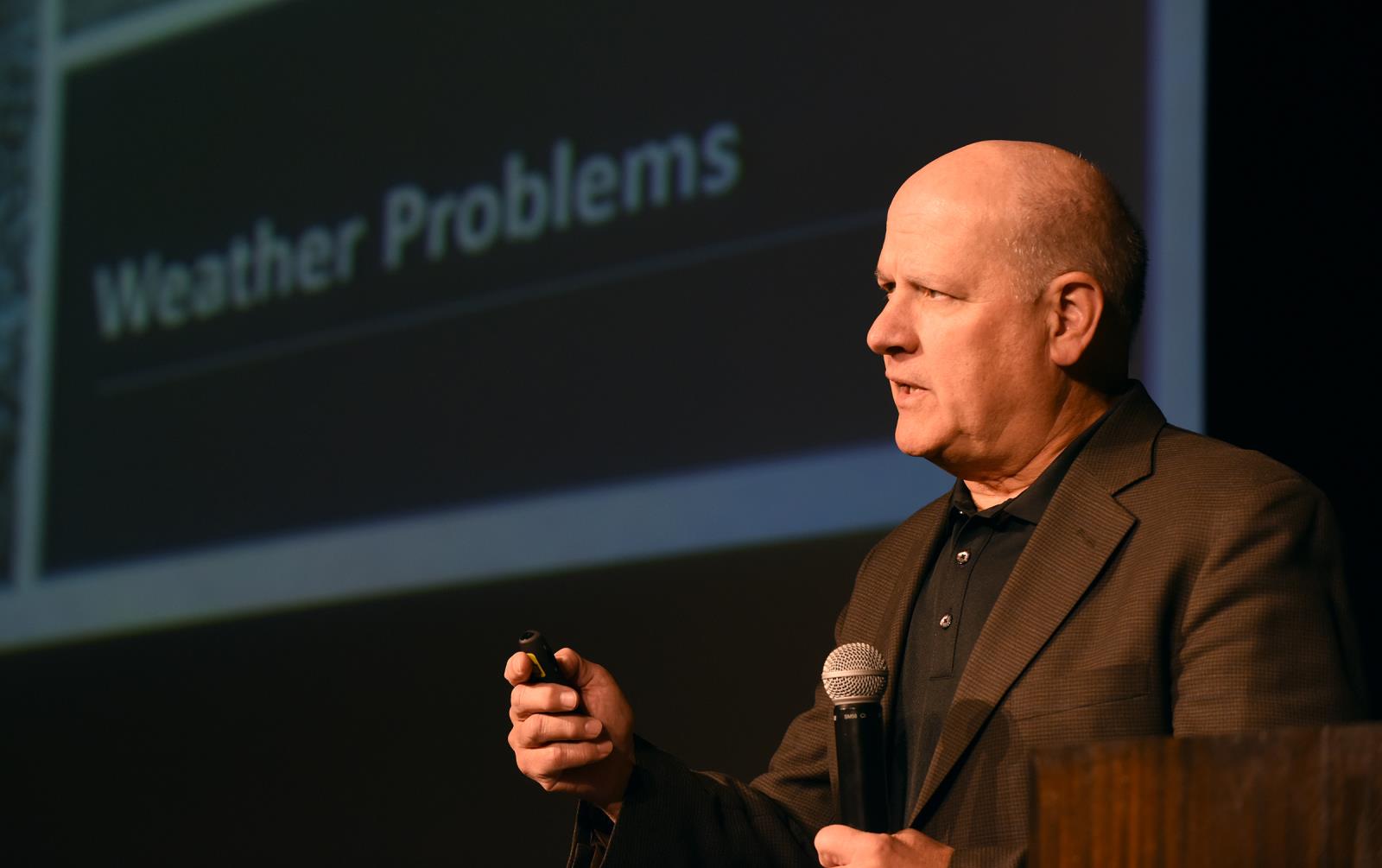Idaho potato production down 6 percent

FORT HALL – “This is a crop that will sell itself” is a refrain that Frank Muir has heard more than once since he became CEO and president of the Idaho Potato Commission in 2003.
But Muir had a message for those in attendance at the commission’s 2019 Harvest Meeting Nov. 13.
“Thirteen billion pounds of potatoes does not sell itself, you’ve got to market it,” Muir told the audience. “You have the perfect opportunity to keep the demand going and keep prices strong. This product doesn’t just magically sell itself.”
One of the messages to come out of the Harvest Meeting was that while Idaho’s total production and yield is down for 2019, the crop is a good one and Idaho has enough potatoes to meet demand.
“The last message we want to send is that Idaho doesn’t have any potatoes to provide all of your retail needs,” Muir said. “We will have sufficient potatoes to meet their needs.”
According to a recent crop production report released by the USDA’s National Agricultural Statistics Service, Idaho’s average potato yield this year is 435 hundredweight (cwt) per acre, down 15 cwt from 2018.
In the same report, NASS estimated that total Idaho potato production for 2019 would be 13.4 billion cwt, down about 5.5 percent from the 2018 production total of 14.1 billion cwt.
Travis Blacker, the IPC’s industry relations director, described this year’s growing season as one filled with contrary weather from planting to harvest.
“We had a lot of rain in the spring when we were planting and pretty much from the Magic Valley east we had two different frost episodes,” Blacker said.
The good news, he said, “is that when the frost hit, we think there was 85 percent of the crop in. That’s a lot of potatoes; good, quality potatoes.”
Blacker said he has heard from some growers that this year’s crop, despite the delay in planting and the multiple frosts during harvest, is the best they’ve seen in at least 20 years and that this year’s Russet Burbank crop was exceptional.
“I think all we’ve done with this freeze is take off the top of what could be a normal yield year,” Muir said. “The price has gone up (and) there’s been very strong, great returns for growers.”
Muir said that the price for fresh market potatoes is positioned where the industry likes to see it coming into the current retail season and that there’s no reason for prices to retreat.
University of Idaho potato scientists Nora Olsen and Mike Thornton updated the audience on their IPC-funded quality management studies on bruise reduction during harvest and storage.
Thornton said they’ve been monitoring quality notices that come from Walmart distribution centers across the country and the majority of quality notices for the 2017 and 2018 crops have come from seven distribution centers in the southeast corridor of the U.S.
“It points to the difficulty of shipping into areas with high temperatures and high humidity,” Thornton said.
He said that black spot and pressure bruise seem to be the biggest quality issues annually.
Olsen also addressed storage issues for potatoes harvested following the October freezes.
“We can talk about the three days of frost but we also had a lot of colder temperatures leading up to that and a lot of potatoes harvested outside of our traditional or recommended temperature ranges,” Olsen said. “So be aware that the quality all around this whole time may be impacted.”
Olsen advised the growers to closely monitor those potatoes harvested and put in storage following the freeze.
“Be realistic about what those potatoes can do if you decide to move them through the packing system,” she said. “Prioritize, especially potatoes that are sharing a bay or sharing a plenum with your good potatoes. Decide where your greatest profit is and what you need to do to maximize that and don’t compromise the good things to try to salvage what is potentially damaged.”
Randy Hardy, a fresh potato grower out of Oakley, said his crop was looking really good prior to the cold spell and that his Russet Burbanks were good quality and good size.
He said he refers to a frost like this year’s cold snap as the gift that keeps on giving.
“You put them away in storage, you think you can dry them out, you think you can store them,” he said of the current situation. “You think you can sort them all out and it just never is a very good situation. The frost, because it’s so much different than a bacterial rot, is going to be a real challenge for fresh guys as well as process guys.”
Hardy said he has heard that processors are looking for more potatoes in the fresh market to meet potential shortages during the coming year.
Still can't find what you are looking for? Find by topic:
- County Presidents & Board Information
- County Resource Page
- Delegate Form
- Discount Programs
- Discussion Meet
- Discussion Meet - High School
- Education Programs
- Events
- Excellence Award (YF&R)
- Expense Voucher
- Flickr
- Gem State Producer
- High School Discussion Meet
- High School Speech Contest
- Hope in Idaho Ag
- House of Delegates Credentials Form
- IFBF Board of Directors
- IFBF Staff
- Insurance
- Issue Advisory
- Legislative Action Program
- Legislative Issues
- Library
- MAC Trailer
- Magazines
- Map My Benefits
- Member Benefits
- Member Discount
- Membership Application
- Mental Health Resources
- Mission Statement
- Moving Agriculture to the Classroom
- Newsletter Sign up
- News Releases
- News Room
- Open Range Law
- Photo Contest
Thank You to Our Partners









